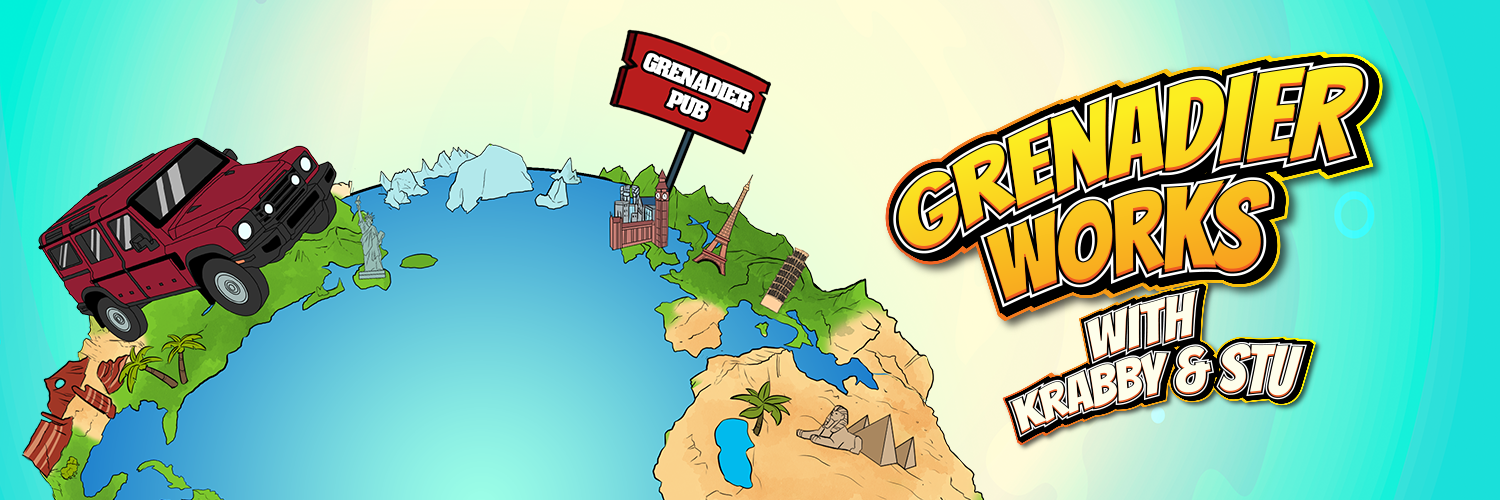Pinching of the boot is a serious design flaw by Ineos/Dana/Magna and should have been easily identified during development. An engineering 101 screw up of the highest order. Excessive flexing of the boot while also unacceptable at least would have been less easy to identify as an problem. Dana or Magna had to raise this as an issue and Ineos chose to do nothing and proceed with production anyway.100% gets pinched. The rubber gets extruded by the pressure and thins out. Eventually it develops a tear which centrifugal force takes advantage of and finishes the boot off.
This happens on stock or lifted trucks. Just happens faster on lifted because you live closer to the extrusion point.
The Grenadier Forum
Register a free account today to become a member! Once signed in, you'll be able to contribute to the community by adding your own topics, posts, and connect with other members through your own private inbox! INEOS Agents, Dealers or Commercial vendors please use the contact us link at the bottom of the page.
You are using an out of date browser. It may not display this or other websites correctly.
You should upgrade or use an alternative browser.
You should upgrade or use an alternative browser.
Dana is not responsible. Ineos along with Carraro did not set pinion right for the drive shaft angles. Tipping the pinion up a few degrees would have solved the problem. Reducing your stock shock length by 1" would also solve the problem, but reduce off-road performance a bit of course.Pinching of the boot is a serious design flaw by Ineos/Dana/Magna and should have been easily identified during development. An engineering 101 screw up of the highest order. Excessive flexing of the boot while also unacceptable at least would have been less easy to identify as an problem. Dana or Magna had to raise this as an issue and Ineos chose to do nothing and proceed with production anyway.
Ineos could literally back out of this by doing a shock recall to reduce max travel and 99% of owners wouldn't know any better.
And those with super low caster numbers may never have a problem with the drive shaft, but they are accepting the poor steering characteristics.
Last edited:
Regardless of who should be blamed it is a problem that should have been easily identified during the development process. One million miles of road/trail testing without a single CV boot failure. Not buying it.
And yes the pinion angle is the source of the problem. It should be higher so that it points more directly at the transfer case thereby reducing the CV angle on both ends. At the same time the knuckles should be rotated back/down to increase caster. This will almost certainly be done as a running change, but this will do nothing for existing owners other than to reduce our resale values.
And yes the pinion angle is the source of the problem. It should be higher so that it points more directly at the transfer case thereby reducing the CV angle on both ends. At the same time the knuckles should be rotated back/down to increase caster. This will almost certainly be done as a running change, but this will do nothing for existing owners other than to reduce our resale values.
So would this put it roughly were the front end on 90's RRC's and D1's sat? Not a bad compromise with lockers?Reducing your stock shock length by 1" would also solve the problem, but reduce off-road performance a bit of course.
I seriously doubt we’ll ever really determine the actual culprit. I’ll just chalk it up to production time lines and cash.
Maybe if you account for Rover radius arms.So would this put it roughly were the front end on 90's RRC's and D1's sat? Not a bad compromise with lockers?
The Grenadier doesn't really flex that great. It's ok, but nothing to write home about. So any reduction will be felt. An H strap could solve the issue without limiting articulation but that gets a little messy.
But considering the average use case of the Grenadier a little reduction in travel assuming you have lockers won't be devastating in any way.
I don't think it's as simple as rotating the diff. The output shafts need to run on parallel planes to prevent accelerated wear of the joints.Regardless of who should be blamed it is a problem that should have been easily identified during the development process. One million miles of road/trail testing without a single CV boot failure. Not buying it.
And yes the pinion angle is the source of the problem. It should be higher so that it points more directly at the transfer case thereby reducing the CV angle on both ends. At the same time the knuckles should be rotated back/down to increase caster. This will almost certainly be done as a running change, but this will do nothing for existing owners other than to reduce our resale values.
The same is true of PTO shafts on tractors and implements.
Tom
This is true for u-joints but not for CVs as used on the Grenadier.I don't think it's as simple as rotating the diff. The output shafts need to run on parallel planes to prevent accelerated wear of the joints.
The same is true of PTO shafts on tractors and implements.
Tom
Similar threads
- Replies
- 6
- Views
- 808
- Replies
- 66
- Views
- 3K
- Replies
- 0
- Views
- 409



